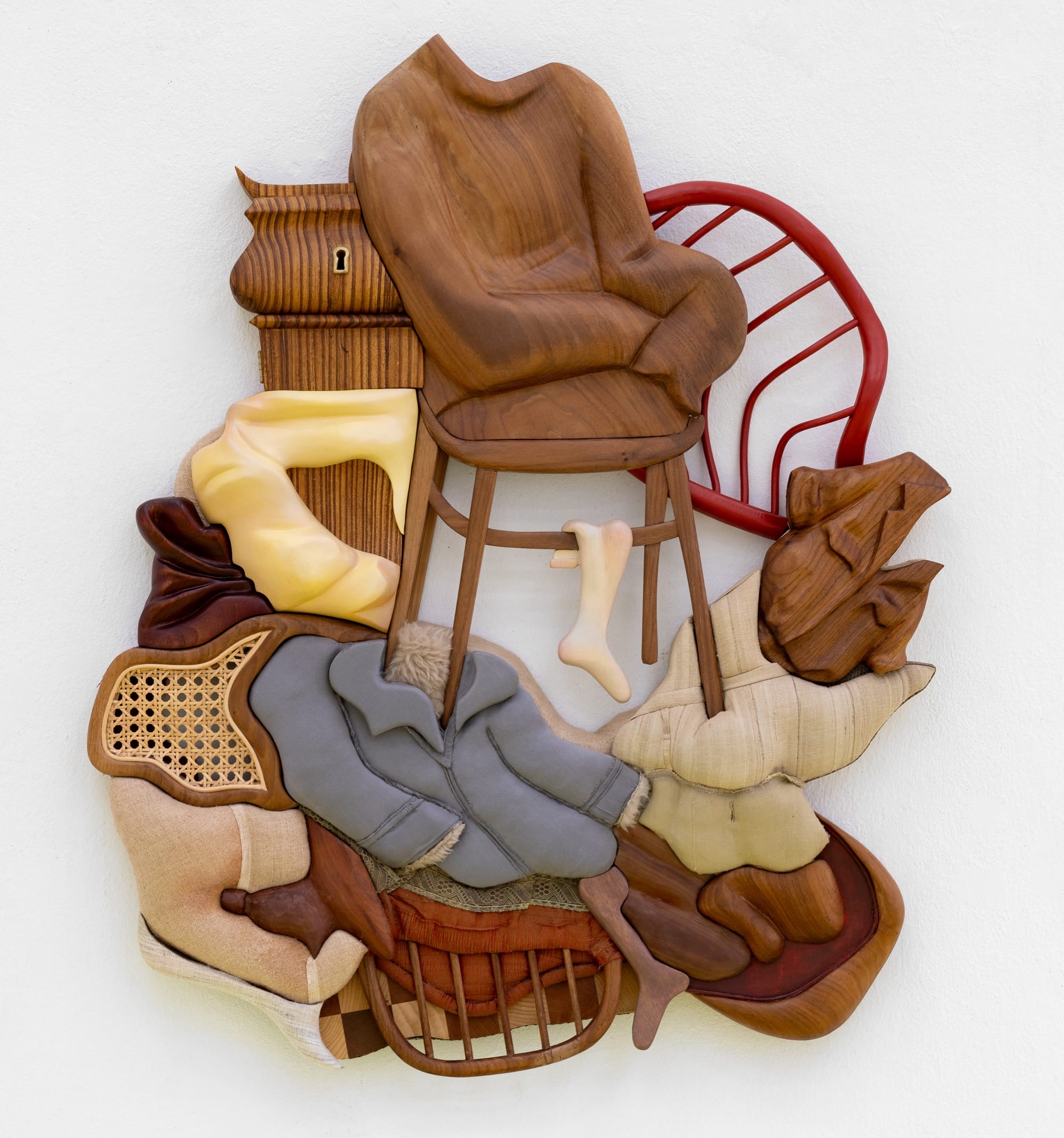Detail of “The First Supper (Galaxy Black)” (2023), bronze, black patina, and gold leaf, 217.3 x 928.6 x 267.9 centimeters. Installation view of ‘Entangled Pasts, 1768-now. Art, Colonialism and Change’ at the Royal Academy of Arts, London. All photos by Jonty Wilde, courtesy of the artist, Perrotin, and Glenstone Museum, Potomac, Maryland, shared with permission
From a satellite orbiting Earth for seven years in celebration of Robert Henry Lawrence, Jr., the first Black astronaut, to a pulsing neon human skeleton that illuminates Rosalind Franklin’s contributions to the field of science, Tavares Strachan embraces technology and experimental processes to reframe historic narratives.
This month in London, the Royal Academy of Arts opened Entangled Pasts 1768-now. Art, Colonialism and Change, a large-scale survey of works by British art historical giants like J.M.W. Turner, Joshua Reynolds, and John Singleton Copley in dialogue with leading contemporary artists of today like Hew Locke, Yinka Shonibare, Lubaina Himid, and Sonia Boyce. And in the courtyard, an impressive life-size reimagining of Leonardo da Vinci’s iconic tempera mural, “The Last Supper,” replaces the Renaissance painting’s subjects with Black scientists, activists, artists, and other prominent figures.
In “The First Supper,” which took Strachan four years to complete, notable figures include abolitionist Harriet Tubman, activists Marcus Garvey and Marsha P. Johnson, nurse Mary Seacole, and singer-songwriter Sister Rosetta Tharpe, among others. Strachan places former Ethiopian emperor Haile Selassie in place of Jesus and himself in the role of Judas Iscariot.
Art historian Alayo Akinkugbe suggests in an essay for the exhibition’s catalogue that positioning himself as traitor represents the artist’s betrayal of “history’s status quo by bringing to light these marginalized figures in a composition that is typically associated with Christ and his disciples.” Strachan also continues a long tradition of surreptitiously including a self-portrait within a broader subject, perhaps most famously in Jan van Eyck’s 1434 “Arnolfini Portrait” or Raphael’s famous Vatican fresco, “The School of Athens,” completed between 1509 and 1511.
Installation view of “The First Supper (Galaxy Black)” at the Royal Academy of Arts, London
While “The First Supper” draws on the past to reconsider the present and contemplate the future, it is also about the act of eating together and how this simple yet significant ritual, from small dinners to large gatherings, builds and sustains relationships.
Strachan describes gathering around a table to be “part of the fabric of human experience,” and every detail of food and drink in this work carries a symbolic meaning. You’ll find African rice, catfish, breadfruit, cocoa, chicken, custard apple, and soursop—all foods consumed in the Caribbean that can be traced to Indigenous and African influences, paralleling the troubling histories of enslavement and indentured servitude.
The use of bronze coated in gold and black patina also nods to African material and visual culture and the highly accomplished craftsmanship of artisans who devised the first known lost-wax casting method as long ago as the 10th century. Some of the most famous bronze works were created in the Kingdom of Benin, now Nigeria.
Gold bears a similar symbolic weight, referencing Europeans’ attraction to West Africa’s ‘Gold Coast’ in the 15th century. Strachan notes that the material is “one of Africa’s most abundant natural resources and has indisputably shaped its history and its people throughout time.”
Entangled Pasts continues through April 28. Find more on Strachan’s website.
Detail of “The First Supper (Galaxy Black)”
Detail of “The First Supper (Galaxy Black)”
Do stories and artists like this matter to you? Become a Colossal Member today and support independent arts publishing for as little as $5 per month. The article Tavares Strachan Reimagines ‘The Last Supper’ in a Monumental Tribute to Black Historical Figures appeared first on Colossal.


